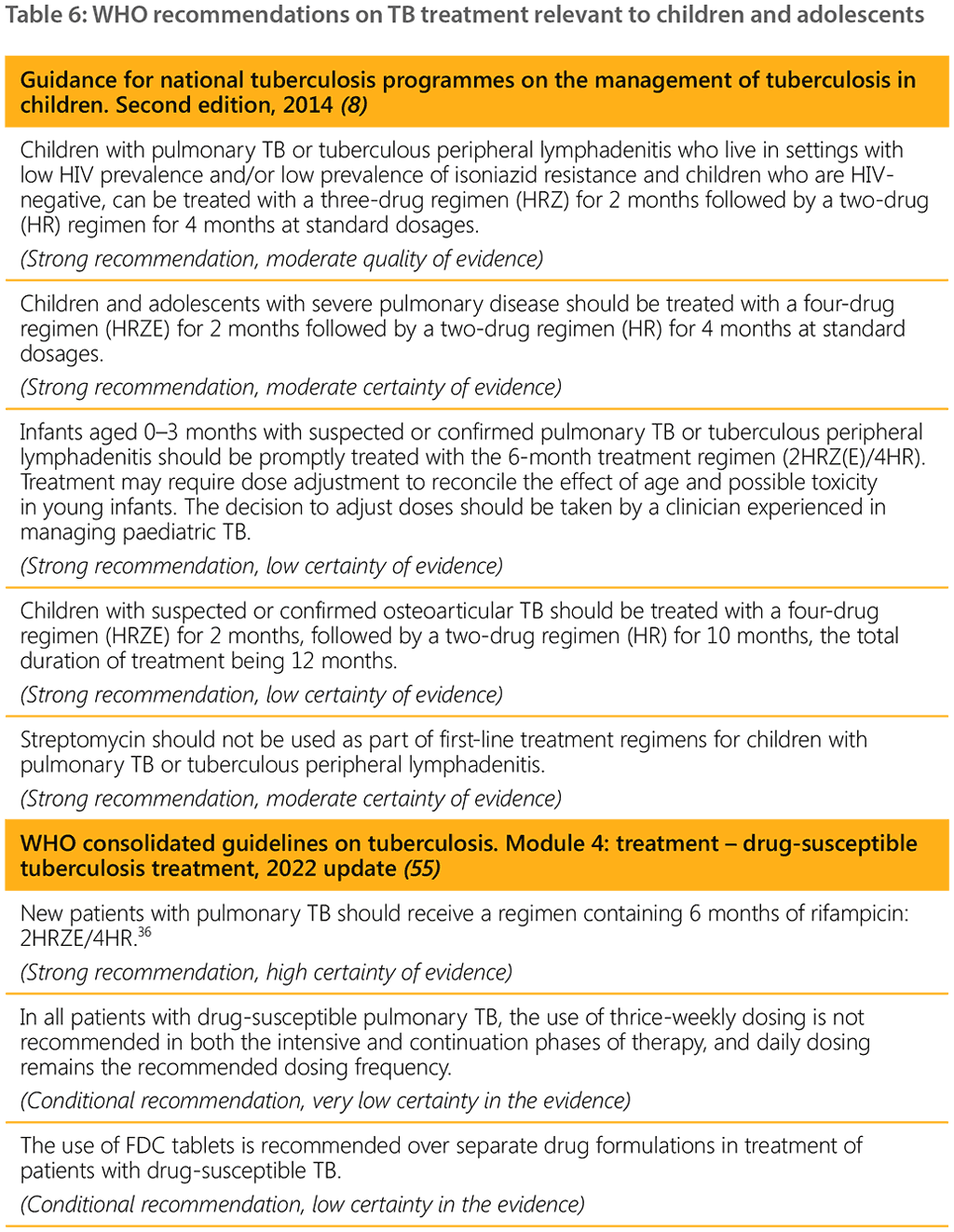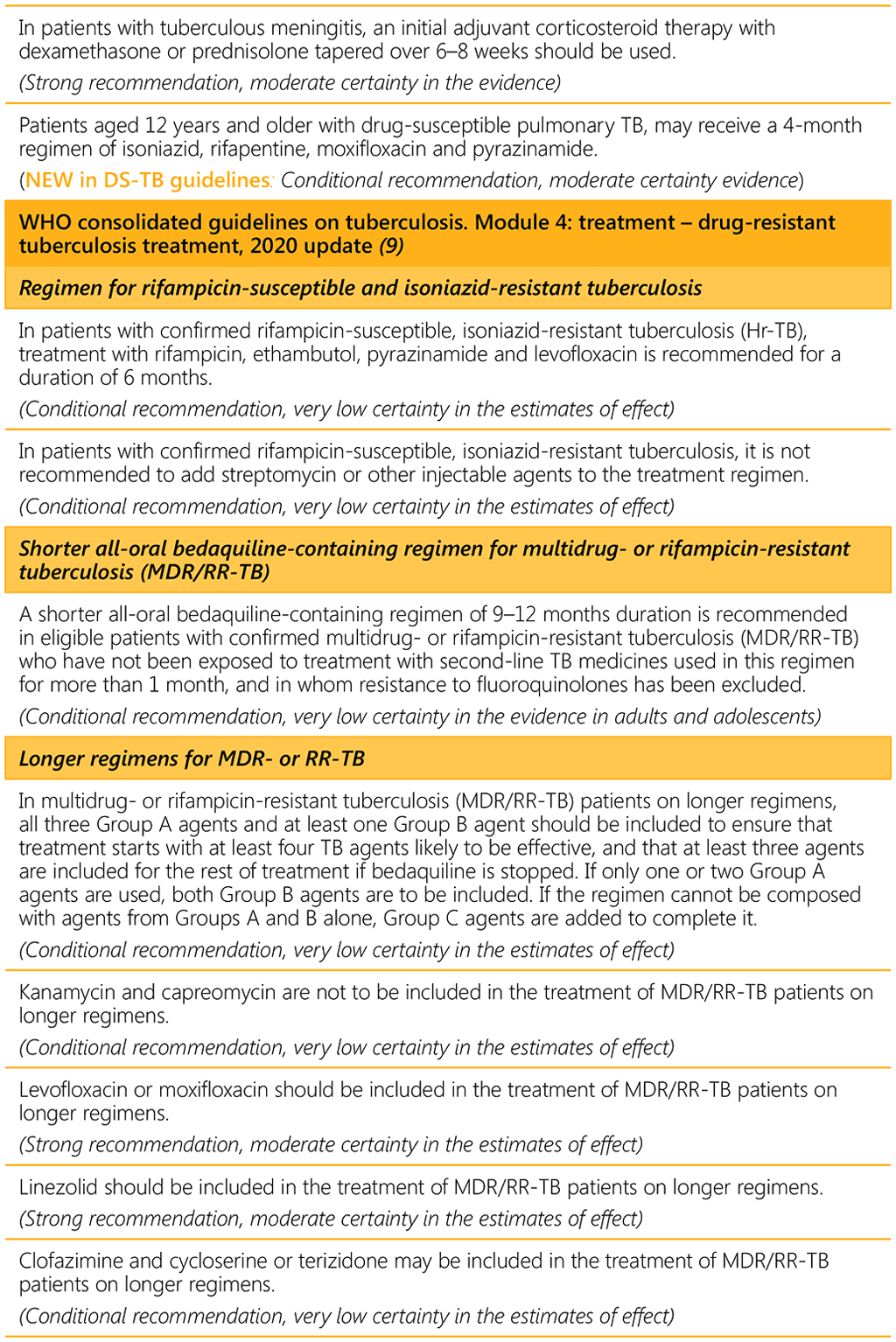6.1.1. Justification and evidence
PICO questions:
a. In children and adolescents with signs and symptoms of TB, should decentralization of child and adolescent TB services versus centralized child and adolescent TB services (at referral or tertiary hospital level) be used?
b. In children and adolescents exposed to TB, should decentralization of child and adolescent TB prevention and care services versus centralized prevention and care services (at referral or tertiary hospital level) be used to increase coverage of TPT in eligible children and adolescents?
 Feedback
Feedback
